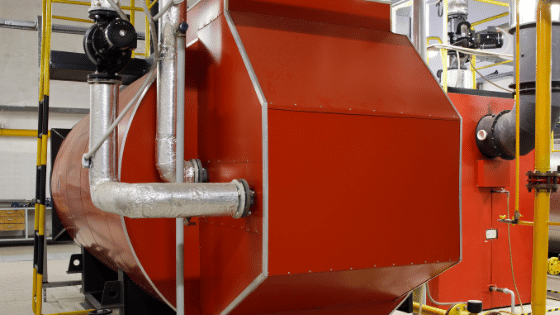SA537 is a heat treated steel plate that is used in pressure vessels, and Kloeckner Metals is proud to supply it routinely across our nationwide network of branches.

This heat treated, carbon/manganese/silicon steel plate is less sensitive in harsh weather conditions due to its composition. The notch toughness will withstand even in low temperature conditions, making it a great option for pressure vessel plates. It has designated classes which are determined by their specific heat treatment process. Class I is normalized and Class II is quenched and tempered.
It offers excellent notch toughness and high strength. It also shows good corrosion resistance, and sustains at high pressures with excellent stress distribution.
This fine grain steel meets high composition standards required by oil, gas, and petrochemical industries for application in high pressure-retaining vessels.
The grade is excellent for use in fusion welded pressure vessels and structures where low to moderate temperature services and high strength levels are required. This includes pressurized tanks, boilers, food processing equipment, piping and heat exchangers.
It has good machinability.
It has good weldability.
It is heat treatable.
It offers excellent notch toughness and high strength. It also shows good corrosion resistance, and sustains at high pressures with excellent stress distribution.
This fine grain steel meets high composition standards required by oil, gas, and petrochemical industries for application in high pressure-retaining vessels.
The grade is excellent for use in fusion welded pressure vessels and structures where low to moderate temperature services and high strength levels are required. This includes pressurized tanks, boilers, food processing equipment, piping and heat exchangers.
It has good machinability.
It has good weldability.
It is heat treatable.
The heat treatment process differs between the classes for this PVQ steel plate. Class I is normalized, whereas Class II is quenched and tempered. The quenched and tempered process gives Class II slightly more strength, and it is available in greater thickness.
These two carbon steel low alloy plates both achieve PVQ specifications, however SA516 is more popular and is seen in a wider range of applications. SA516 and SA537 Class I share a normalized heat treatment, but differ in chemical composition and yield strength. SA537 has a higher yield strength ensuring high pressures will be retained without fracture. SA537 Class II shows slightly greater strength than SA516 overall, and receives a different heat treatment.
The heat treatment process differs between the classes for this PVQ steel plate. Class I is normalized, whereas Class II is quenched and tempered. The quenched and tempered process gives Class II slightly more strength, and it is available in greater thickness.
These two carbon steel low alloy plates both achieve PVQ specifications, however SA516 is more popular and is seen in a wider range of applications. SA516 and SA537 Class I share a normalized heat treatment, but differ in chemical composition and yield strength. SA537 has a higher yield strength ensuring high pressures will be retained without fracture. SA537 Class II shows slightly greater strength than SA516 overall, and receives a different heat treatment.
Steel base plates are fundamental elements employed in various manufacturing processes. These flat, rectangular...
Metal fabrication is a critical process that transforms raw metal materials into finished products....
The solar industry has undergone a significant transformation by incorporating steel products into various...
The unprecedented pace of solar growth is challenging and reforming America’s construction and engineering...
If you’ve got a roof over your head, it’s partly thanks to purlins. A...
Acquiring highly profitable company with annual sales of around USD 30 million Significant expansion...
A stainless steel depot is a specialized facility or supplier that stocks and provides...
American manufacturers use about 28.2 billion pounds of aluminum every year, 41.6% of it...
Leading steel distributor expands commitment to sustainability in the North American market. Kloeckner Metals,...
At Kloeckner, we are excited to announce that our Santa Fe Springs, CA location...

X
The Kloeckner Metals website uses modern technologies. Unfortunately, your browser doesn't support those technologies.
Download the latest version of one of these browsers to experience the site: